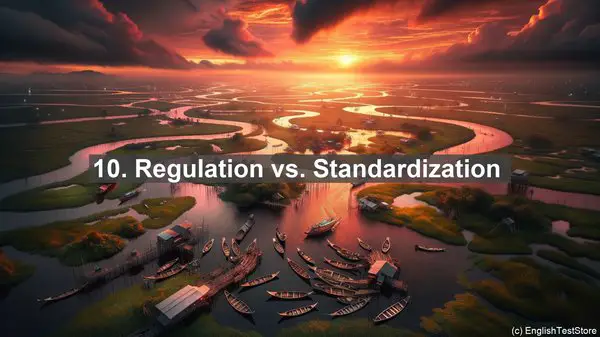Introduction to the Topic
Today, we’re diving into the fascinating world of nanotoxicology. As you delve deeper into this field, you’ll come across several terms that might seem similar but have distinct meanings. In this lesson, we’ll unravel the top 10 commonly confused words in nanotoxicology, ensuring you have a crystal-clear understanding of each one.

1. Nanoparticle vs. Nanomaterial
One of the most fundamental distinctions in nanotoxicology is between nanoparticles and nanomaterials. While both terms refer to materials at the nanoscale, nanoparticles specifically denote particles with all three dimensions at the nanoscale, whereas nanomaterials encompass a broader range, including nanofibers, nanotubes, and more. Understanding this distinction is crucial when studying their behavior and potential risks.
2. Toxicity vs. Hazard
Toxicity and hazard are often used interchangeably, but they have different meanings. Toxicity refers to the inherent ability of a substance to cause harm, while hazard takes into account the potential for exposure. In other words, a substance might be highly toxic, but if there’s no exposure route, the hazard is low. This differentiation is vital when assessing the risk associated with nanomaterials.
3. Aggregation vs. Agglomeration
When nanoparticles come together, it can happen in two ways: aggregation and agglomeration. Aggregation refers to the reversible clustering of particles, where they can disperse again, while agglomeration is the irreversible clustering, forming larger entities. This distinction is significant when considering factors like stability, mobility, and potential effects on biological systems.
4. Bioaccumulation vs. Biomagnification
In the context of nanotoxicology, bioaccumulation and biomagnification pertain to the accumulation of nanoparticles in living organisms. Bioaccumulation refers to the gradual buildup of nanoparticles within an organism, while biomagnification is the process where the concentration of nanoparticles increases at higher levels of the food chain. Both processes can have ecological and health implications.
5. Excretion vs. Elimination
Excretion and elimination are often used interchangeably, but they have distinct meanings. Excretion refers to the removal of a substance from the body, typically through urine or feces. Elimination, on the other hand, encompasses all routes of removal, including metabolism and excretion. Understanding this difference is crucial when studying the fate of nanomaterials in biological systems.
6. Uptake vs. Adsorption
Uptake and adsorption are terms used to describe how nanoparticles interact with biological systems. Uptake refers to the internalization of nanoparticles by cells or organisms, while adsorption is the adherence of nanoparticles to a surface. Both processes play a role in determining the potential effects of nanomaterials on living systems.
7. In vitro vs. In vivo
In the field of nanotoxicology, experiments can be conducted in vitro or in vivo. In vitro refers to studies performed outside a living organism, typically using cell cultures, while in vivo studies involve living organisms. Each approach has its advantages and limitations, and combining both is crucial for a comprehensive understanding of nanomaterial behavior.
8. Risk vs. Uncertainty
When assessing the potential impact of nanomaterials, it’s essential to consider both risk and uncertainty. Risk refers to the probability of harm occurring, taking into account factors like exposure and toxicity. Uncertainty, on the other hand, acknowledges the limitations in our knowledge and the potential for unknowns. Balancing risk and uncertainty is a key challenge in nanotoxicology.

9. Nanosafety vs. Risk Assessment
Nanosafety and risk assessment are two complementary aspects of ensuring the safe development and use of nanomaterials. Nanosafety focuses on understanding the potential hazards and implementing measures to mitigate them, while risk assessment involves quantifying the potential harm and determining acceptable exposure levels. Both are crucial for responsible nanotechnology advancement.
10. Regulation vs. Standardization
As the field of nanotoxicology continues to evolve, the importance of regulation and standardization becomes evident. Regulation refers to the establishment of guidelines and policies to ensure the safe use of nanomaterials, while standardization involves the development of consistent methods and protocols for testing and characterization. Both are essential for fostering trust and ensuring the responsible growth of nanotechnology.
